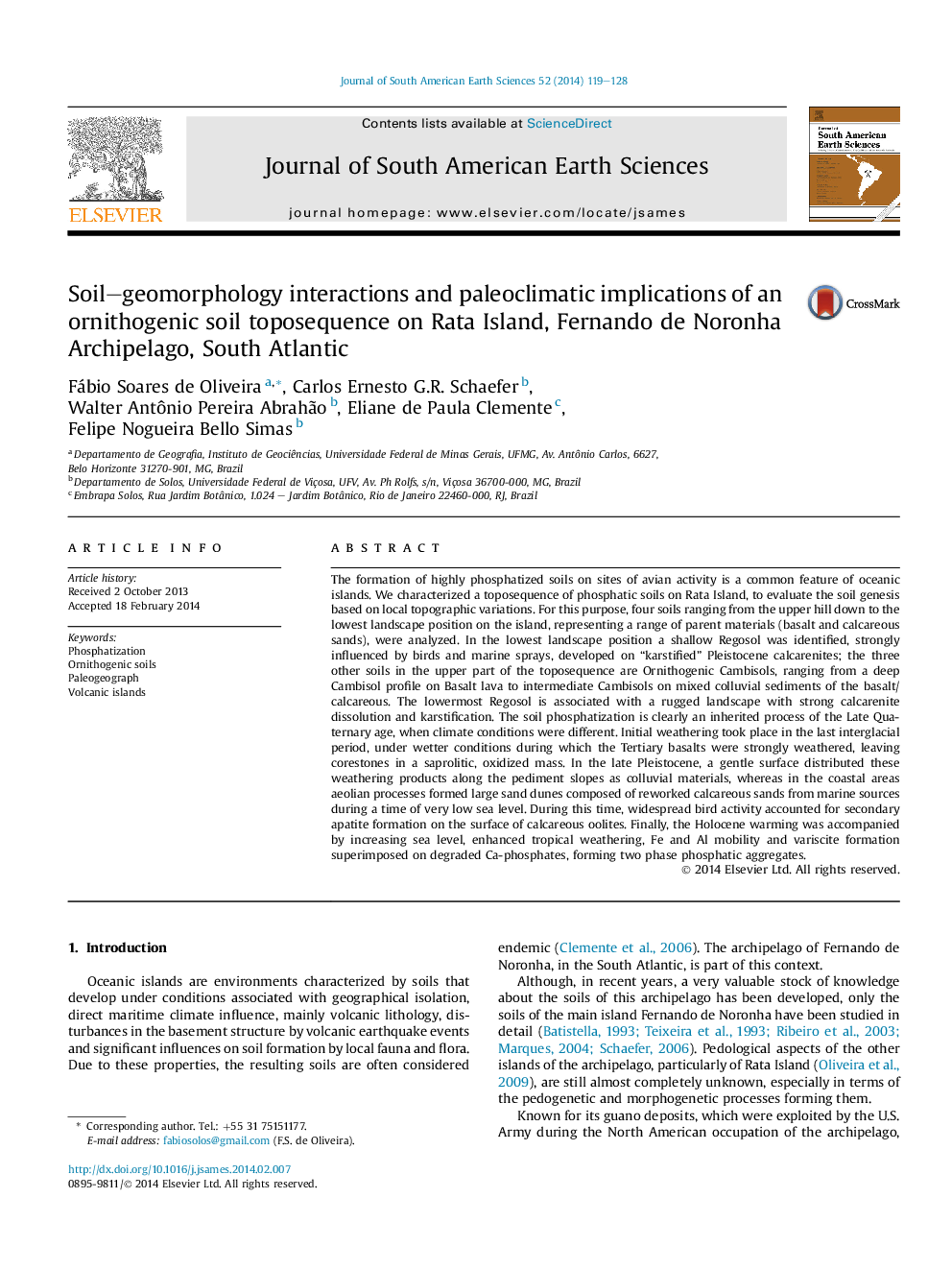| کد مقاله | کد نشریه | سال انتشار | مقاله انگلیسی | نسخه تمام متن |
|---|---|---|---|---|
| 6431335 | 1635157 | 2014 | 10 صفحه PDF | دانلود رایگان |
- The bio-litho-toposequence in the Rata Island is composed by ornithogenic soils.
- Initial weathering transformed the basalts in weathered mantle.
- The phosphate soils occurred under dry weather conditions (Late Quaternary).
- The current humid conditions promote the transformation of P-Ca into P-Al.
The formation of highly phosphatized soils on sites of avian activity is a common feature of oceanic islands. We characterized a toposequence of phosphatic soils on Rata Island, to evaluate the soil genesis based on local topographic variations. For this purpose, four soils ranging from the upper hill down to the lowest landscape position on the island, representing a range of parent materials (basalt and calcareous sands), were analyzed. In the lowest landscape position a shallow Regosol was identified, strongly influenced by birds and marine sprays, developed on “karstified” Pleistocene calcarenites; the three other soils in the upper part of the toposequence are Ornithogenic Cambisols, ranging from a deep Cambisol profile on Basalt lava to intermediate Cambisols on mixed colluvial sediments of the basalt/calcareous. The lowermost Regosol is associated with a rugged landscape with strong calcarenite dissolution and karstification. The soil phosphatization is clearly an inherited process of the Late Quaternary age, when climate conditions were different. Initial weathering took place in the last interglacial period, under wetter conditions during which the Tertiary basalts were strongly weathered, leaving corestones in a saprolitic, oxidized mass. In the late Pleistocene, a gentle surface distributed these weathering products along the pediment slopes as colluvial materials, whereas in the coastal areas aeolian processes formed large sand dunes composed of reworked calcareous sands from marine sources during a time of very low sea level. During this time, widespread bird activity accounted for secondary apatite formation on the surface of calcareous oolites. Finally, the Holocene warming was accompanied by increasing sea level, enhanced tropical weathering, Fe and Al mobility and variscite formation superimposed on degraded Ca-phosphates, forming two phase phosphatic aggregates.
Journal: Journal of South American Earth Sciences - Volume 52, July 2014, Pages 119-128
